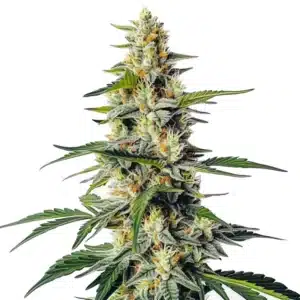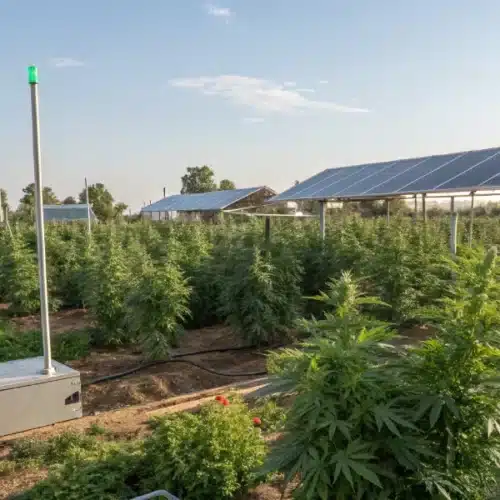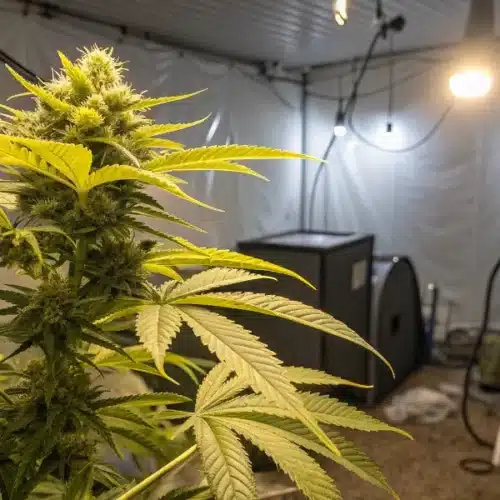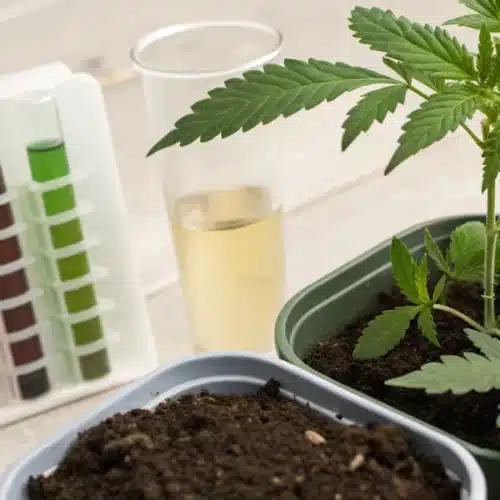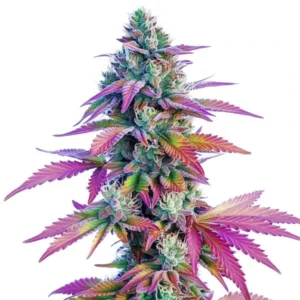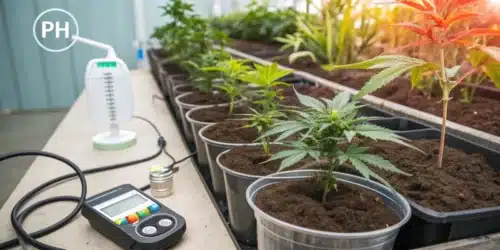Knowing pH and Its Importance
When cultivating cannabis, one of the most significant factors that can affect plant health and yield is the pH level of your growing medium. pH, which stands for potential hydrogen, measures the acidity or alkalinity of a substance. For cannabis growers, managing pH is not just a technical detail, it’s a critical component of successful cultivation. But why is this so important? The answer lies in how pH levels influence the availability of nutrients to your plants. If the pH is too high or too low, plants may show signs of nutrient deficiencies even when nutrients are present in abundance. Relizing how pH interacts with your cannabis plants can unlock the full potential of your harvest.
When discussing pH levels, you’ll often hear terms like acidic and alkaline. pH is measured on a scale from 0 to 14, with 7 being neutral. Numbers below 7 indicate acidity, while numbers above 7 signify alkalinity. For cannabis, the sweet spot tends to be slightly acidic. This delicate balance is crucial for maximizing nutrient uptake and enhancing growth. Managing this balance is where many growers find themselves either excelling or facing challenges. From improving root health to boosting flowering, the right pH level can significantly impact your cannabis plants’ overall well-being.
PH in Cannabis Growth
PH in cannabis growth cannot be overstated. Like a dance between acidity and alkalinity, the right pH level creates an environment where cannabis can thrive. When pH levels are optimal, nutrients like nitrogen, phosphorus, and potassium are readily available, promoting healthy growth. However, when pH levels deviate from this ideal range, nutrient lockout can occur. This means that even if nutrients are present, the plant cannot absorb them efficiently. This scenario can lead to stunted growth, yellowing leaves, and diminished yields.
Moreover, the role of pH extends beyond nutrient absorption. It influences microbial activity in the soil, which in turn affects root health and disease resistance. Beneficial microbes thrive in a specific pH range, helping to decompose organic matter and release nutrients in forms that plants can use. A well-balanced pH fosters a thriving microbial community, enhancing the overall vitality of your cannabis plants. In short, realizing and managing pH is akin to fine-tuning an orchestra; when everything is in harmony, the results are nothing short of spectacular.
How pH Affects Nutrient Uptake
Nutrient uptake is the lifeline of any plant, and for cannabis, the pH level plays a pivotal role in this process. At the correct pH range, cannabis roots can absorb essential nutrients efficiently, translating to vibrant growth and robust yields. However, if the pH strays too far from this range, nutrient lockout can occur, where the plant cannot uptake nutrients, leading to deficiencies. This is why maintaining the ideal pH is paramount for any serious cannabis cultivator. The nuances of pH management can mean the difference between a thriving plant and one that’s struggling.
Knowing how pH affects nutrient uptake involves delving into the chemistry of the soil or growing medium. In a balanced pH environment, nutrients remain in forms that the plant can easily access. For instance, iron becomes available to plants when the pH is slightly acidic. On the other hand, an alkaline environment can make essential nutrients like phosphorus less accessible. By maintaining an optimal pH, you ensure a nutrient-rich buffet for your cannabis plants, facilitating vigorous growth and bountiful harvests. It’s like setting the table for a feast where everything is just right.
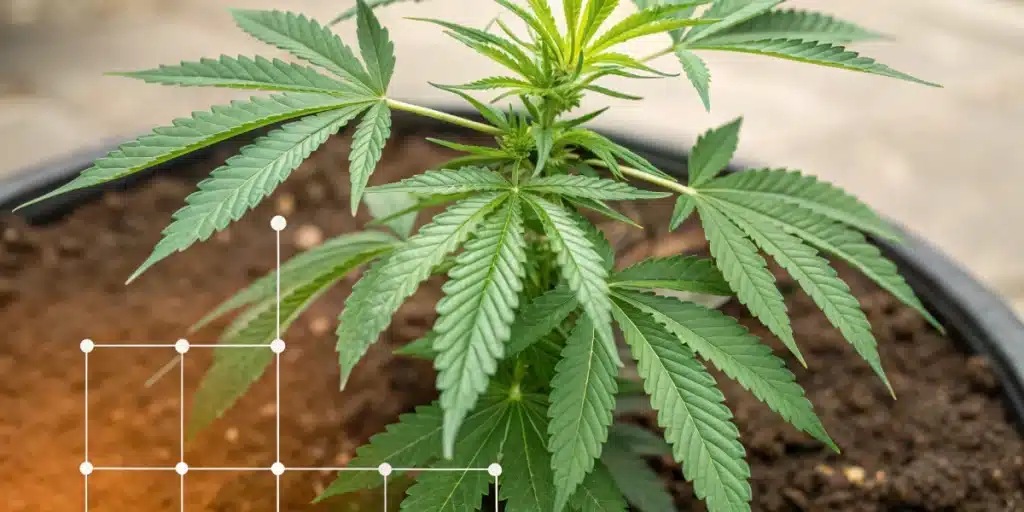
Promos & Deals
Factors Influencing the Optimal pH
Achieving the best pH for cannabis involves knowing a variety of factors that can influence the pH levels in your growing medium. One must consider the type of system being used, whether it’s soil or hydroponics, as well as environmental and genetic factors. Each of these plays a significant role in determining the optimal pH for your specific growing conditions. By tailoring your pH management practices to these factors, you can set the stage for healthy and productive cannabis plants. A one-size-fits-all approach simply won’t cut it if you’re aiming for top-tier results.
Environmental factors such as temperature, humidity, and light exposure also have a say in the pH game. For instance, higher temperatures can increase evaporation rates, potentially concentrating nutrients and altering pH levels. Similarly, the genetic makeup of your cannabis strains can influence how they respond to different pH levels. Some strains may be more tolerant of pH fluctuations, while others require more precise management. By realizing and accounting for these variables, you can fine-tune your approach and maintain an optimal growing environment tailored to the unique needs of your cannabis plants.
Soil vs. Hydroponic Systems
When considering the best pH for cannabis, it’s crucial to differentiate between soil and hydroponic systems. Each system has its unique pH requirements due to the fundamental differences in how nutrients are delivered to the plants. In soil-based systems, the ideal pH typically ranges from 6.0 to 7.0. Soil acts as a buffer, offering some leeway in pH fluctuations. This means that soil can be a bit forgiving if the pH drifts slightly outside the ideal range. However, it’s still essential to keep an eye on pH levels to prevent long-term nutrient issues.
In contrast, hydroponic systems require a more precise pH management, usually between 5.5 and 6.5. Since hydroponics involves delivering nutrients directly to the roots through water solutions, any deviation from the ideal pH can quickly impact nutrient uptake. Hydroponic systems don’t have the buffering capacity of soil, making them more susceptible to pH-related problems. Whether you’re growing in soil or using a hydroponic setup, realizing the specific pH needs and maintaining those levels is key to optimizing your cannabis crop.
Environmental and Genetic Factors
Besides the growing system, environmental and genetic factors are critical in determining the best pH for cannabis. Environmental conditions such as light, temperature, and humidity can all influence how pH affects your plants. For instance, high temperatures can accelerate nutrient uptake, making precise pH management even more crucial. Similarly, humidity levels can affect transpiration rates, which in turn can impact the pH balance in your soil or nutrient solution. Adjusting your pH management strategy according to these environmental factors ensures your plants have the best chance to thrive.
Genetic factors also play a significant role. Different cannabis strains have varying pH preferences based on their genetic makeup. Some strains are more adaptable and can tolerate a wider pH range, while others are more finicky and require precise conditions for optimal growth. Knowing the specific needs of your chosen strains can guide you in fine-tuning your pH levels for maximum yield and potency. By taking both environmental and genetic factors into account, you can create a holistic pH management strategy that caters to the unique demands of your cannabis plants.
Methods for Testing and Adjusting pH
Once you’ve grasped the importance of pH in cannabis cultivation, the next step is mastering the methods for testing and adjusting these levels. Testing the pH of your growing medium, whether soil or hydroponics, is a straightforward process that can significantly impact your crop’s success. Regular testing ensures that you catch any pH imbalances before they become problematic, allowing you to take corrective actions swiftly. From simple pH strips to advanced digital meters, the tools available make it easy for growers to keep their pH levels in check.
After testing, you may find that adjustments are necessary to bring your pH into the optimal range. This adjustment process can involve using pH up or pH down solutions to tweak the acidity or alkalinity of your growing medium. These solutions are specially formulated to make small adjustments without shocking your plants. Realizing how to use these tools effectively can transform your cannabis cultivation efforts, leading to healthier plants and more abundant yields. With the right testing and adjustment techniques, you’re well on your way to mastering the art of pH management.
Common pH Testing Techniques
There are several techniques available to cannabis growers for testing pH levels, each with its advantages and considerations. One of the most accessible methods is using pH test strips, which provide a quick and inexpensive way to gauge acidity or alkalinity. Simply dip the strip into your soil runoff or hydroponic solution, and compare the resulting color to a reference chart. This method is straightforward and user-friendly, making it a popular choice for beginners. However, it’s essential to note that test strips may not always offer the precision required for fine-tuning pH levels.
For those seeking more accuracy, digital pH meters are a worthwhile investment. These devices provide a precise numerical reading of your pH levels, allowing for more accurate adjustments. They are particularly useful in hydroponic systems, where even minor deviations can impact nutrient uptake. Regular calibration of digital pH meters is necessary to ensure their accuracy over time. By knowing and utilizing these common pH testing techniques, cannabis growers can maintain optimal conditions for their plants, paving the way for a successful harvest.
Using pH Up and Down Solutions
After testing your pH levels, you may need to make adjustments to achieve the ideal range for cannabis growth. This is where pH up and down solutions come into play. These products are formulated to alter the pH of your growing medium, whether you’re dealing with soil or a hydroponic system. pH up solutions are alkaline substances designed to raise pH levels, while pH down solutions are acidic agents used to lower pH levels. Using these solutions effectively allows you to fine-tune the pH range to ensure optimal nutrient uptake.
When using pH adjustment solutions, it’s crucial to make changes gradually. Adding too much solution at once can cause drastic pH swings, which can stress your plants. Start with small amounts, and test the pH again after each adjustment to monitor progress. By using pH up and down solutions carefully, you can maintain a stable environment that promotes healthy cannabis growth. This method of pH management is a vital skill for any grower aiming for a productive and high-quality harvest.
Best Practices for pH Management
Achieving the best pH for cannabis involves more than just occasional testing and adjusting. Implementing best practices for pH management ensures that your plants remain in peak condition throughout their growth cycle. One of the most effective strategies is regular monitoring, which allows you to catch any deviations early and make timely adjustments. By keeping a close eye on your pH levels, you can prevent potential issues and maintain a stable environment conducive to healthy cannabis growth.
In addition to regular monitoring, adopting preventative measures can safeguard against pH fluctuations. These measures include maintaining a consistent watering schedule, using quality nutrients, and ensuring proper drainage in your growing medium. By implementing these practices, you can create a robust system that minimizes pH-related problems and maximizes your cannabis yield. The art of pH management is a continuous process, but with the right approach, it becomes an integral part of successful cannabis cultivation.
Regular Monitoring Techniques
Regular monitoring of pH levels is a cornerstone of effective cannabis cultivation. By implementing consistent monitoring techniques, you can quickly identify any deviations from the optimal pH range and take corrective actions. One popular method is to set a regular schedule for testing the pH of your soil runoff or hydroponic solution. This can be done weekly or bi-weekly, depending on your system and strain sensitivity. Regular monitoring helps catch potential issues early, preventing them from escalating into significant problems.
In addition to scheduled testing, keeping detailed records of your pH measurements can provide valuable insights into trends and patterns. By analyzing this data, you can identify recurring issues and make informed decisions about your pH management strategy. This proactive approach to pH monitoring ensures that your cannabis plants receive the consistent care they need to thrive. With regular monitoring techniques in place, you can maintain a balanced environment that fosters healthy growth and abundant yields.
Preventative Measures for pH Fluctuations
Besides regular monitoring, adopting preventative measures is crucial for managing pH fluctuations in your cannabis cultivation efforts. One effective strategy is to ensure a consistent watering schedule, as irregular watering can lead to pH imbalances. Overwatering or underwatering can alter the pH of your soil or hydroponic solution, impacting nutrient availability. By maintaining a balanced watering routine, you can prevent these fluctuations and keep your pH levels stable.
Another preventative measure is to invest in quality nutrients and amendments that are designed to stabilize pH levels. Some nutrients come with pH buffers that help maintain the desired range, reducing the need for frequent adjustments. Additionally, ensuring proper drainage in your growing medium can prevent the buildup of excess salts and minerals, which can affect pH levels. By incorporating these preventative measures into your cultivation routine, you can create a resilient system that minimizes pH-related issues and maximizes your cannabis yield.
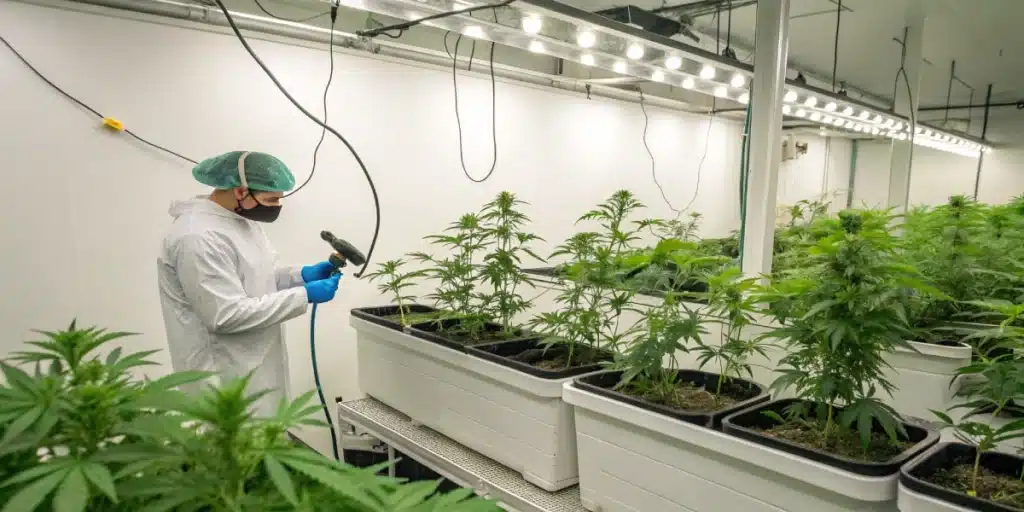
FAQs about What is the Best pH for Cannabis
What is the ideal pH range for cannabis plants?
The ideal pH range for cannabis plants depends on the growing medium. For soil, the optimal pH typically falls between 6.0 and 7.0. This range allows for maximum nutrient availability while maintaining a healthy microbial environment. In hydroponic systems, a slightly more acidic range of 5.5 to 6.5 is preferred. This precise range ensures efficient nutrient uptake and prevents nutrient lockout. By maintaining these optimal pH ranges, growers can enhance plant health and achieve robust yields.
How do I adjust my pH if it’s too high or low?
Adjusting your pH levels requires the use of pH up or pH down solutions. If your pH is too low (acidic), adding a pH up solution can raise the levels to the desired range. Conversely, if your pH is too high (alkaline), a pH down solution can lower it. When making adjustments, it’s essential to proceed gradually to avoid shocking your plants. Start with small amounts, test the pH, and make further adjustments as needed. This method ensures a stable environment for your cannabis plants.
How often should I test the pH of my growing medium?
The frequency of pH testing depends on your growing system and the specific needs of your cannabis strains. For most soil-based systems, testing the pH once a week or bi-weekly is sufficient. Hydroponic systems, which are more sensitive to pH fluctuations, may require more frequent testing, such as every few days. Regular testing allows you to catch any deviations early and make timely adjustments, ensuring optimal conditions for your plants. By maintaining a consistent testing schedule, you can keep your cannabis crop healthy and productive.



